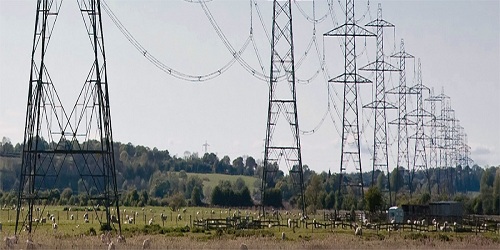Most Popular
-
TRF strategies: Using Peak Reliability to increase Availability
Power is one of the most critical components of infrastructure crucial for the economic growth and w.. -
Artificial Inteligence in Power System
A persistent and reliable supply of power is vital for the working of today's modern and advanced so.. -
Managing renewable energy resources with AI support
Natural concerns and shortage of assets are persistently pushing interest for sustainable power sour.. -
Motor Current Signature Analysis (MCSA): A Powerful Tool for Predictive Maintenance in Power Industry
- How MCSA helps prevent costly breakdowns and downtime. - The benefits of online testing (no produ..
POWER DISTRIBUTION PLANNING FOR SMART GRID APPLICATIONS
The modernization of electricity transmission and distribution system so as to maintain a reliable and secure electricity infrastructure that can meet future demand growth characterize a Smart Grid.Smart grid could be defined as the automated, widely distributed energy delivery networkdescribed by a two-route stream of power and data which will be equipped for checking everything from power plants to customer preference to personal equipment in use.Finding the reasonable plan for a dependable optimized network to all normal changes and applications because of the intelligent framework is an extremely complex and insightful errand and hence is beyond scope of normal human capabilitiesThe AI system, proposed should be in type of simulated neural system (ANN) for voltage checking and output yield streamlining.
The smart networks will be equipped for:-
- Greater efficiency, reliability and of the electric grid by use of Digital Signal Processing
- Dynamic optimization of grid operations and resources, with full cyber-security.
- Development and incorporation of demand response and energy-efficiency resources.
- Deployment of real-time, automated, interactive technologies that optimize the physical operation, grid operations, and distribution automation.
- Deployment and integration of advanced electricity storage and peak-shaving technologies.
- Provision to consumers of timely information and control options.
The first step of the scheme is to determine the target system and run the power flow calculation to find the voltage level at every node of the system.The target system is preferred to be a medium tension distribution system which is very common system in the small cities and remote areas which is the main target of smart grid applications.Next step is to train and construct the ANN which will be the tools used in further observations in the system.
The smart grid represents solution to the full suite of current and proposed responses to the difficulties of power supply.
The smart grid would enhance network parameters and performance by improving
- Resistant: - Use of estimation methods for fault detection will allow self-healing mechanism to be put in place reducing vulnerability to natural disasters.
- Improved Network Topology: - Bidirectional flow of energy will enable distributed generation.
- Load Balancing: - Improved load balancing by prediction of client equipment use and preference.
- Peak Curtailment: -By implementing differential pricing based on demand management.
- Sustainability: - Improved flexibility permits greater penetration of highly variable renewable without the addition of energy storage.
